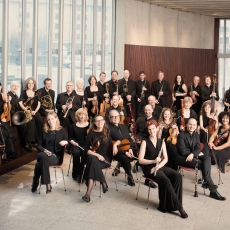Scottish Chamber Orchestra - Mozart: Opera Arias & Overtures - Classical Candor
As we have come to expect from Linn Records, every
new release is a welcome pleasure. This album of Mozart arias and overtures is
no exception, especially as the performers do so well and the recording sounds
so good.
However, most recordings these days seem to
need something beyond good performances and good sound, so the added attraction
here is the choice of material. Not content with merely providing an arbitrary
selection of Mozart arias and overtures, Maestro Christian Baldini, soprano
Elizabeth Watts, and the Scottish Chamber Orchestra have chosen to give us one
or two arias and the overture from each of six Mozart operas. Thus, the program
gives us a better idea of the flavor of the operas represented than just some
random assortment of things.
There is plenty of zest, spunk, in Maestro
Baldini's overture readings, although I'm not he captures all of Mozart's charm
or drama along the way. Things seem to zip along merrily enough yet without
quite the expansiveness that might have made the music even more delightful (or
in the case of Don Giovanni, more melodramatic). Moreover, Baldini
appears to get quicker as he moves from one overture to the next, the final
selections a touch more taxing than they are exuberant. Still, these are quite
exciting interpretations, and one cannot deny the conductor's energy and
enthusiasm.
On the other hand, Baldini and soprano Elizabeth Watts handle the arias exquisitely. Ms. Watts possesses a fine, expressive voice, and she isn't shy about using it to its fullest extent, from softest and gentlest to loudest and most-explosive expressions.
I also loved the precision and poise of the
Scottish Chamber Orchestra, who never fail to impress me with their devotion to
the music. They appear to respond to conductor Baldini's every direction.
Producer and recording engineer Philip Hobbs
made the album at Usher Hall, Edinburgh, UK in June 2013. He recorded it for
hybrid SACD playback, meaning that if you own an SACD player, you can listen
either in SACD multichannel or SACD two-channel, and if you have a regular CD
player, you can listen in standard two-channel stereo. I listened in
two-channel SACD stereo using a Sony SACD player.
There is a good sense of depth to the sound,
noticeable from the opening bell. There's also a strong dynamic range and punch
to the music, which lend to the album's overall lifelike quality. But you knew
that going in, given that it's a Linn recording. The midrange sounds nicely
detailed without being bright or hard; the highs show a reasonable sparkle; and
the lows are commendably solid. A small degree of hall ambience adds to the
illusion of reality.



